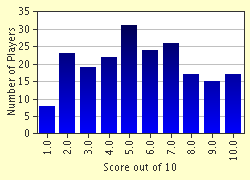Quiz Answer Key and Fun Facts
1. The Kingdom Animalia (Animal Kingdom) to which coelenterates belong has been divided into various phyla (singular: phylum) in which animals with some common ancestry are grouped together. For example, there is Phylum Porifera for sponges, Phylum Annelida for segmented worms and so on.
As you might have guessed, there is a separate phylum which includes almost all coelenterates. What is the name of this phylum?
2. Coelenterates exist in two forms or zooids- polyps and medusae. Polyps occur mostly in colonies, and attach themselves to rocks or debris on the sea-bed, while almost all medusae are free-living and can swim.
Do reef-building corals occur in the polyp form?
3. Among the metazoa (multicellular organisms) in the Kingdom Animalia, above which group do coelenterates rank in complexity?
4. Coelenterates are very simple organisms, made up of different tissues and a few simple organs. What is the name given to the system of chambers or tubes within a coelenterate?
5. Here is the name of a coelenterate that has been scrambled: EENAASNMEO. Using these letters, construct the coelenterate!
6. The phylum to which coelenterates belong is made up of the Class Hydrozoa (primarily polyps), Class Anthozoa (polyps only), Class Cubozoa (box-like coelenterates, considered by some to be a part of Class Scyphozoa) and Class Scyphozoa (primarily medusae).
To which class do sea wasps, one of the greatest hazards to swimmers, belong?
7. Coelenterates are diploblastic, i.e., they possess two basic layers of tissues. The outer layer is know as the ectoderm, and the inner layer is know as the endoderm. Between these layers there is a jelly-like non-cellular substance. What is this substance called?
8. This is among the simplest of coelenterates and belongs to the Class Hydrozoa. It is among the simplest-structured multicellular organism and is used in many elementary biology classes. It has six to ten tentacles surrounding the mouth which it uses to capture food. It moves either by gliding on its foot or by somersaulting. It reproduces by forming buds. Two species of this coelenterate are commonly found, one brownish-grey in colour and one green in colour. Which coelenterate am I talking about?
9. Which of the following is NOT a coelenterate?
10. Which class of coelenterates has the greatest number of species?
Source: Author
achernar
This quiz was reviewed by FunTrivia editor
crisw before going online.
Any errors found in FunTrivia content are routinely corrected through our feedback system.

